📞+86 153 7530 2641 📧 hongjing.Wang@feichuncables.com
M(StD)HOEU Flat Festoon Cable for Hoisting Gears and Machine Tools – Flexible, Oil-Resistant Rubber Cable for Indoor & Outdoor Applications
Discover the M(StD)HOEU flat rubber festoon cable designed for hoisting gears and machine tools under medium mechanical stress. Ideal for strong bends in one plane and suitable for both indoor and outdoor use, it is resistant to oils, fats, chemicals, and UV exposure. A reliable flexible cable solution for cranes and transport systems.
hongjing.Wang@Feichun
8/5/20257 min read

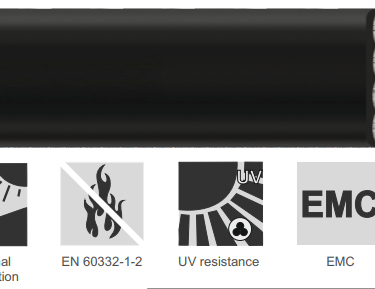
Introduction
In the demanding world of industrial automation and material handling, festoon cable systems serve as the critical electrical lifeline for mobile equipment. These specialised systems enable continuous power and signal transmission to moving machinery such as cranes, hoists, and automated production lines. The challenge lies in selecting cables that can withstand the constant mechanical stress of repetitive bending whilst maintaining reliable electrical performance over extended service periods.
Flexible flat cables have emerged as the preferred solution for hoisting and material transport applications due to their superior mechanical properties and space-efficient design. Unlike traditional round cables, flat configurations distribute mechanical stress more evenly across the cable structure, significantly reducing wear and extending operational life in dynamic environments.
The M(StD)HOEU cable model represents a sophisticated engineering solution specifically developed for festoon applications requiring exceptional durability and reliability. Built to comply with stringent European standards including DIN VDE 0250-809, this flat rubber festoon cable addresses the unique challenges faced by industrial operators in crane systems, automated warehouses, and manufacturing environments where equipment mobility is essential.
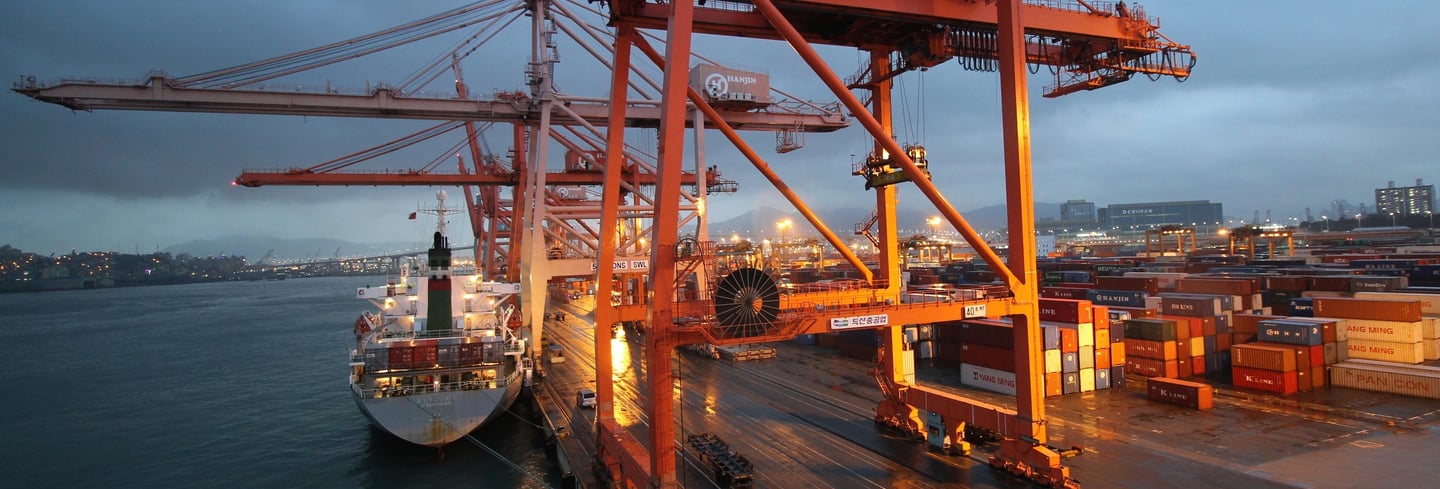

Application Areas
The M(StD)HOEU flat festoon cable excels in a diverse range of industrial applications where traditional cabling solutions often fail prematurely. In hoisting gear systems, the cable's flat profile and flexible construction make it ideally suited for crane trolleys, bridge cranes, and overhead travelling systems. The cable's ability to handle medium mechanical stress whilst maintaining electrical integrity ensures consistent performance in demanding lifting operations.
Machine tool applications benefit significantly from the cable's robust design, particularly in CNC machining centres, automated production lines, and robotic welding stations. The flat configuration allows for efficient cable management in confined spaces whilst the flexible rubber construction accommodates the repetitive movements characteristic of modern manufacturing equipment.
The cable demonstrates exceptional performance in environments requiring strong bending in one plane, making it particularly valuable for festoon systems where cables must follow precise movement patterns. This characteristic proves invaluable in portal cranes, container handling equipment, and automated storage and retrieval systems where predictable cable movement is essential for operational efficiency.
Both indoor and outdoor compatibility extends the cable's versatility across various industrial sectors. Indoor applications include warehouse automation systems, assembly line equipment, and cleanroom environments, whilst outdoor use encompasses port cranes, construction equipment, and mining operations where exposure to environmental elements is unavoidable.
Key Features
The M(StD)HOEU cable's flexible flat rubber construction, based on DIN VDE 0250-809 standards, represents the culmination of advanced cable engineering. The flat profile distributes mechanical stress evenly across the cable width, significantly reducing the concentration of forces that typically lead to premature failure in round cables. This design philosophy results in extended service life and reduced maintenance requirements in dynamic applications.
EPR (Ethylene Propylene Rubber) insulation provides exceptional electrical performance combined with superior mechanical properties. The EPR compound type 3GI3, manufactured according to DIN VDE 0207-20 specifications, offers excellent resistance to thermal cycling and mechanical deformation whilst maintaining consistent dielectric properties throughout the cable's operational life.
The heavy-duty rubber sheath utilises type 5GM3 compound conforming to DIN VDE 0207-21 standards, providing robust protection against environmental hazards. This outer sheath demonstrates remarkable resistance to abrasion, impact, and chemical exposure whilst maintaining flexibility across a wide temperature range.
Individual screening incorporating aluminium-backed polyester foil and tinned copper wire braiding ensures superior EMC (Electromagnetic Compatibility) performance. With coverage exceeding 85%, this screening configuration effectively suppresses electromagnetic interference whilst providing excellent signal integrity for sensitive control applications.
The cable's comprehensive resistance profile encompasses oils, fats, and various industrial chemicals, making it suitable for harsh industrial environments. Additionally, UV and ozone resistance ensure reliable outdoor performance, whilst moisture resistance prevents degradation in humid conditions.
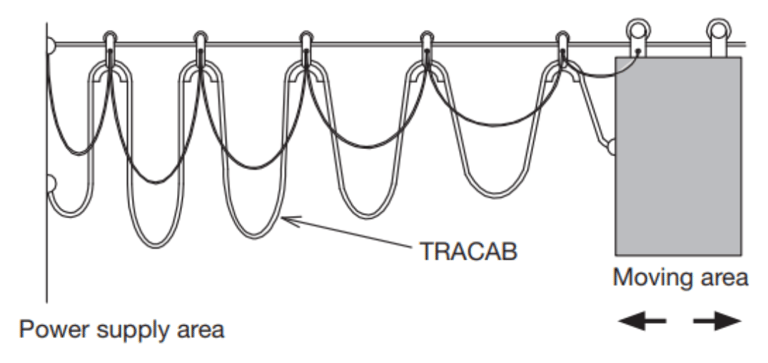

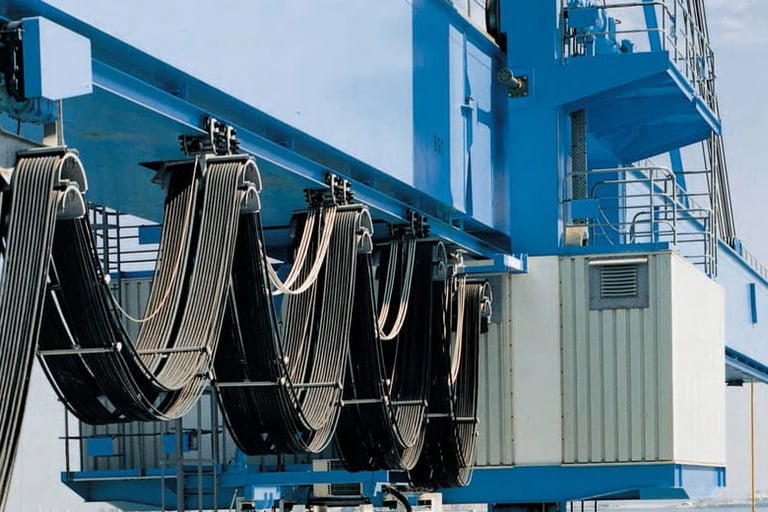

Technical Specifications
The M(StD)HOEU cable operates at a rated voltage of 0.7/1.2 kV in AC systems and 0.9/1.8 kV in DC applications, providing versatility for various industrial power requirements. This voltage rating, combined with an AC test voltage of 3.5 kV for 5 minutes, ensures reliable operation with substantial safety margins in demanding industrial environments.
Temperature performance spans from -30°C to +80°C for festoon applications, with an extended range of -40°C to +80°C for fixed installations. The maximum permissible conductor temperature of 90°C and short-circuit temperature of 250°C provide additional safety margins during fault conditions.
Bending radius requirements vary according to cable height, with flexible applications requiring 4xH for cables up to 12mm height and 5xH for taller configurations. This specification ensures optimal mechanical performance whilst preventing excessive stress concentration during dynamic operation.
High-speed trolley operation capability up to 180 metres per minute accommodates the demanding requirements of modern automated systems. This specification, combined with a maximum tensile load of 15 N/mm² on conductors, ensures reliable performance in high-speed material handling applications.
Copper conductors utilise class 5 fine stranded construction for cables 35mm² and above, whilst class 6 finest stranded configuration is employed for conductors 25mm² and below. This approach optimises flexibility whilst maintaining excellent electrical performance across the entire size range.
Flame retardant properties meeting EN 60332-1-2 standards provide essential safety characteristics for industrial installations, ensuring controlled fire propagation in the unlikely event of ignition.
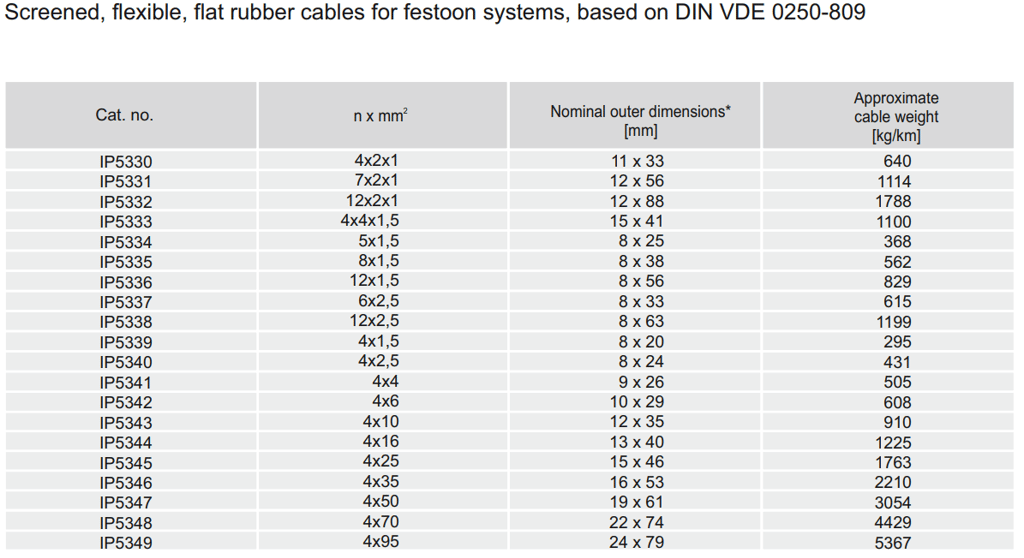

Compliance & Standards
RoHS compliance under directive 2015/863/EU ensures environmental responsibility by restricting hazardous substances in the cable's construction. This compliance demonstrates the manufacturer's commitment to sustainable practices whilst meeting European environmental regulations.
The Low Voltage Directive 2014/35/EU compliance guarantees safe operation within specified voltage ranges, providing assurance for industrial operators regarding electrical safety and performance standards. This directive ensures consistent safety standards across European markets.
Construction Products Regulation CPR 305/2011 compliance addresses fire safety performance in building applications, ensuring appropriate fire behaviour characteristics for permanent installations in industrial facilities.
Oil resistance testing according to EN/IEC 60811-404 validates the cable's suitability for environments where exposure to industrial lubricants and hydraulic fluids is common. This testing provides quantifiable performance data for risk assessment in oil-rich environments.
EMC compliance through aluminium/polyester foil screening combined with copper braiding ensures electromagnetic compatibility in sensitive industrial environments. This dual-layer screening approach provides superior protection against both external interference and signal leakage.
Available Variants
The M(StD)HOEU cable series offers comprehensive configuration options to meet diverse industrial requirements. Standard variants include multiple conductor configurations ranging from compact 4-conductor versions suitable for simple control applications to multi-core arrangements accommodating complex automation systems.
Common cross-sectional areas encompass 1.5mm², 2.5mm², 4mm², 6mm², 10mm², 16mm², 25mm², and 35mm² conductors, providing flexibility for both power and control applications. This range accommodates everything from low-current sensor signals to substantial motor control requirements.
Customisation options extend beyond standard configurations, with manufacturers typically accommodating specific core counts and conductor sizes based on application requirements. This flexibility ensures optimal cable specification for unique industrial applications where standard variants may not provide ideal performance characteristics.
The modular approach to cable design allows for efficient inventory management whilst ensuring availability of appropriate specifications for diverse industrial requirements. Standard variants cover the majority of common applications whilst custom options address specialised requirements.
Benefits in Industrial Use
Extended service life in dynamic applications represents perhaps the most significant advantage of the M(StD)HOEU cable design. The combination of flat profile construction, high-quality rubber compounds, and appropriate conductor design results in operational lifespans significantly exceeding those of conventional round cables in similar applications.
Reliable signal and power transmission with individual screening ensures consistent performance in electrically noisy industrial environments. The comprehensive EMC protection prevents interference-related issues that could compromise automation system reliability or safety.
Reduced cable wear and associated downtime provide substantial economic benefits in material handling systems where equipment availability directly impacts productivity. The cable's robust construction minimises premature failures that typically result in costly production interruptions.
The flat profile facilitates efficient cable management in space-constrained installations, allowing for neater festoon arrangements and reduced mechanical stress on support systems. This characteristic proves particularly valuable in retrofit applications where space limitations constrain cable routing options.
Weather resistance and chemical compatibility extend application possibilities beyond controlled indoor environments, enabling unified cable specifications across diverse industrial facilities and reducing inventory complexity.
Common Cable Issues and Solutions
Q: Why do festoon cables fail prematurely in crane applications? A: Premature failure typically results from excessive mechanical stress concentration in round cables. The M(StD)HOEU's flat profile distributes stress evenly, significantly extending service life. Additionally, inadequate bending radius specifications often contribute to early failure - ensure minimum 4xH bending radius for optimal performance.
Q: How can electromagnetic interference issues be prevented in automated systems? A: The M(StD)HOEU's dual-layer screening system with >85% coverage effectively suppresses EMI. Proper earthing of the screen and maintaining physical separation from high-power cables further reduces interference potential.
Q: What causes insulation degradation in industrial cable applications? A: Environmental factors including UV exposure, ozone, chemical contamination, and thermal cycling contribute to insulation degradation. The M(StD)HOEU's EPR insulation and heavy-duty rubber sheath provide comprehensive protection against these degradation mechanisms.
Q: How should festoon cables be maintained to ensure optimal performance? A: Regular visual inspection for signs of wear, proper tensioning to prevent excessive sag, and ensuring adequate support spacing are essential. The cable's robust construction minimises maintenance requirements whilst providing clear visual indicators of service condition.
Conclusion
The M(StD)HOEU flat festoon cable represents an optimal solution for demanding industrial applications requiring reliable power and signal transmission in dynamic environments. Its sophisticated engineering combines the mechanical advantages of flat cable construction with premium rubber compounds and comprehensive screening to deliver exceptional performance in hoisting gear systems, machine tools, and material handling applications.
The cable's compliance with rigorous European standards, comprehensive environmental resistance, and proven reliability in medium mechanical stress environments make it an ideal choice for industrial operators seeking to minimise downtime whilst maximising equipment availability. Whether deployed in indoor manufacturing environments or exposed outdoor crane systems, the M(StD)HOEU delivers consistent performance that industrial operators can depend upon.
For industrial facilities operating cranes, automated systems, or material handling equipment, the M(StD)HOEU flat festoon cable provides the reliability, durability, and performance characteristics essential for maintaining competitive operational efficiency in today's demanding industrial environment.
How to Reach Us
Get in Touch
SiteMap
Product Catalogue
Reeling Cable
Festoon Cable
Shore Power Cable




Scan to add us on WeChat
